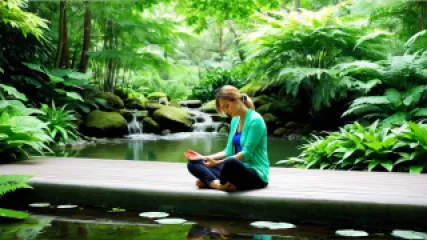Managing Feelings of Disappointment: An Interview with a Psychologist
Managing Feelings of Disappointment: An Interview with Psychologist Theodore Robinson
Dealing with disappointment can be a challenging and emotional experience for many people. Whether it's a failed job opportunity, a relationship that didn't work out, or the inability to achieve a personal goal, the feelings of disappointment can be difficult to navigate. To gain a deeper understanding of this universal human experience, we sat down with psychologist Theodore Robinson to explore strategies for managing feelings of disappointment and finding support during these challenging times.
The Impact of Disappointment on Mental Health
Disappointment is a natural and common human emotion, but it can have a significant impact on our mental health if not properly addressed. According to Theodore Robinson, "Disappointment can lead to feelings of sadness, frustration, and even a sense of failure. These emotions can be quite intense and can linger for an extended period of time, affecting our overall well-being and ability to function effectively in our daily lives."
He explains that disappointment can also trigger a cascade of negative thoughts, such as self-doubt, self-criticism, and a sense of hopelessness. "When we experience disappointment, it's easy to fall into a spiral of negative thinking, where we constantly ruminate on what went wrong and why we weren't able to achieve the desired outcome," says Robinson. "This can further exacerbate our emotional distress and make it more difficult to move forward."
Finding Healthy Coping Strategies
While it's natural to feel disappointed, it's essential to find healthy ways to cope with these emotions. Robinson emphasizes the importance of acknowledging and validating our feelings, rather than trying to ignore or suppress them.
"One of the most important things we can do when dealing with disappointment is to allow ourselves to feel the emotions that arise. It's important to recognize that these feelings are valid and that it's okay to be upset or frustrated. Trying to push them down or 'tough it out' can often make the situation worse in the long run."
He suggests that once we've acknowledged our feelings, we can then start to explore strategies for processing and managing them. Some of the healthy coping strategies Robinson recommends include:
- Engaging in self-care activities such as exercise, meditation, or spending time in nature to help regulate our emotions and restore a sense of balance.
- Seeking support from loved ones who can listen, empathize, and provide a compassionate perspective.
- Practicing self-compassion by avoiding harsh self-criticism and instead treating ourselves with kindness and understanding.
- Reframing our perspective to focus on the lessons and growth opportunities that can come from disappointing experiences.
- Seeking professional help from a therapist or counselor if the feelings of disappointment become overwhelming or interfere with our daily lives.
Robinson emphasizes that the key is to find a coping strategy that works best for the individual, as everyone may respond differently to different approaches.
The Role of Mental Health Coaching
In addition to traditional therapy, Robinson suggests that mental health coaching can be a valuable resource for those struggling with disappointment. "Mental health coaching is a more focused and goal-oriented approach that can help individuals develop the skills and strategies they need to manage their emotions and work towards positive change," he explains.
Unlike therapy, which often delves into the deeper root causes of our issues, coaching is primarily concerned with the present and future, helping individuals identify specific goals and create actionable plans to achieve them. "With a mental health coach, the focus is on empowering the individual to take control of their emotional well-being and to develop the resilience they need to bounce back from disappointments," says Robinson.
He notes that mental health coaching can be particularly helpful for those who are dealing with recurring or persistent feelings of disappointment, as it provides a structured, supportive environment to address these challenges head-on.
Embracing Emotional Empowerment
Ultimately, Robinson believes that the key to managing feelings of disappointment lies in embracing a sense of emotional empowerment. "When we're able to acknowledge our emotions, process them in a healthy way, and develop the strategies and tools to cope with them, we become more resilient and better able to navigate the ups and downs of life," he says.
This empowerment, he explains, can have a ripple effect on our overall well-being and our ability to achieve our goals. "By learning to manage our emotions effectively, we free up mental and emotional resources that can be channeled towards pursuing our dreams and living our best lives."
Finding Support and Moving Forward
For those who are struggling with feelings of disappointment, Robinson emphasizes the importance of seeking support and not trying to navigate these challenges alone. "Reaching out to loved ones, engaging in self-care, and exploring resources like mental health coaching can all be incredibly valuable in helping us process our emotions and find a path forward," he says.
And while the journey may not be easy, Robinson remains optimistic about the potential for growth and transformation. "Disappointment is a fundamental part of the human experience, but it also presents an opportunity for us to develop greater resilience, self-awareness, and emotional intelligence. By embracing this challenge and taking an active role in our own healing and empowerment, we can emerge from the experience stronger, wiser, and more equipped to live fulfilling, meaningful lives."
Theodore Robinson is a licensed psychologist with over 15 years of experience in the field of mental health. He specializes in helping individuals navigate challenging emotions, develop effective coping strategies, and achieve greater emotional well-being. Through his private practice and community outreach efforts, Robinson is dedicated to promoting mental health awareness and empowering individuals to take control of their emotional lives.






